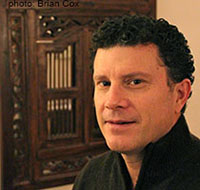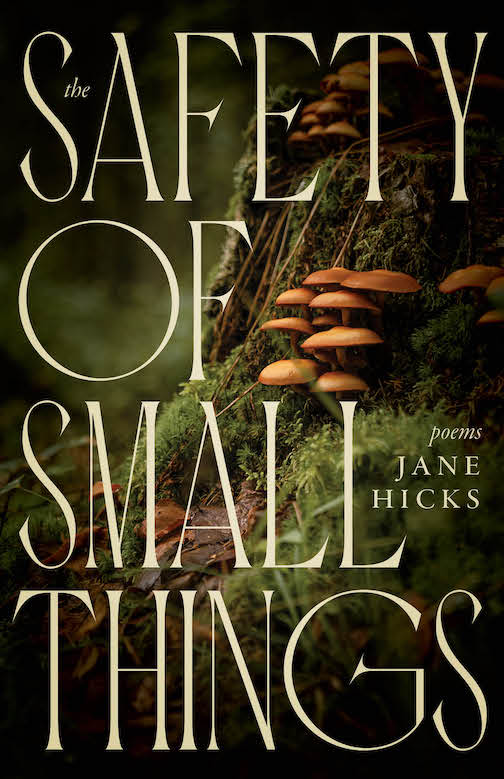The Aftermath
Scott Blackwood’s See How Small, inspired by real-life murders, depicts one community’s grief over an unsolved crime
In 1991 four teenage girls in Austin, Texas, were killed in a horrific crime that took place between 10 p.m. and midnight. The girls, aged thirteen to seventeen, were stripped and tied with their own clothes, and each was shot in the head before the I Can’t Believe It’s Yogurt shop was set on fire. Police investigators followed every imaginable lead in the case—at different times suspecting a serial killer, two Mexican nationals, and local drifters. Finally in 1999 four men were arrested for the murders. Two of them were released for lack of evidence; the other two were convicted but later exonerated when DNA testing failed to connect them to the crime scene. Today, the yogurt-shop murders remain unsolved. In See How Small, Scott Blackwood, a long-time Austin resident now living in Chicago, uses that crime as inspiration for a novel that expresses the ineradicable damage tragedy inflicts on survivors.
 Blackwood’s novel is short in length but expansive in ambition, capturing the ways in which characters scarred by the crime react to having their lives torn apart. Along the way, the novel also describes parallel instances of loss that relate tangentially, or only analogically, to the main events. In other words, this novel is not driven by plot. Instead, it is sustained by its atmosphere of palpable grief and encroaching delirium. To live in this world is to be vulnerable and to invite madness.
Blackwood’s novel is short in length but expansive in ambition, capturing the ways in which characters scarred by the crime react to having their lives torn apart. Along the way, the novel also describes parallel instances of loss that relate tangentially, or only analogically, to the main events. In other words, this novel is not driven by plot. Instead, it is sustained by its atmosphere of palpable grief and encroaching delirium. To live in this world is to be vulnerable and to invite madness.
Blackwood has said in interviews that he wanted to take an “alternate path” in telling this story, a route that focuses not on the crime and subsequent investigation but on the impact it had on people associated with the murders. He has changed many of the details from the crime—reducing the number of victims from four to three, for instance, and moving the scene from a yogurt shop in northwest Austin to an ice-cream place just south of Town Lake—but he has retained many of its central features, including the fact that two of the victims were sisters. Kate, the mother of the fictional Zadie and Elizabeth Ulrich and the owner of this yogurt-shop franchise, appears most frequently in the novel and earns the lion’s share of our sympathy. Kate doesn’t surrender her will to live or give up trying to find peace, but she struggles to quiet the agonizing voices inside her.
The novel opens with the girls’ first-person-plural narration, a voice that peers from beyond death but is still limited to a teenager’s knowledge and frame of reference. The “particles” of their former, material existence still circulate in their mother’s world, offering a real connection that, in solitary moments, Kate can almost grasp. The ghost-girls observe Kate doing laundry: “Our mother matches socks in her head on the floor and thinks for a moment she can smell our perfume but decides it’s just the fabric softener. She stares into the flickering light for a moment, narrows the gap. See? we say. See how small a thing it is that keeps us apart.”
 One character, the aptly named Hollis Finger, may hold the key to the mystery, but only if the police can find a way to sift through his gobbledygook. The problem is that Hollis, known as the guy with the “art car,” a vehicle decorated with thousands of miniature figurines, doesn’t realize the significance of what he has seen. What he knows instinctively, however, is that “people were linked to one another in time and space by something just outside it, hidden from them always but intuited like the stars in daytime.”
One character, the aptly named Hollis Finger, may hold the key to the mystery, but only if the police can find a way to sift through his gobbledygook. The problem is that Hollis, known as the guy with the “art car,” a vehicle decorated with thousands of miniature figurines, doesn’t realize the significance of what he has seen. What he knows instinctively, however, is that “people were linked to one another in time and space by something just outside it, hidden from them always but intuited like the stars in daytime.”
Despite these moments of metaphysical intimations, though, See How Small for the most part stays grounded in the surviving characters’ attempts to re-purpose their lives, a process that does not have the benefit of closure in the form of justice. Kate begins a relationship with Jack Dewey, the fire fighter who pulled the girls from the burned-out building. Jack, a single father whose teenage daughter disappears for weeks at a time, appears to be as distraught over the murders as Kate is. When Kate spies on his house one night, she notes that he is turning his living room into a reproduction of Kate’s own house as it was when her daughters were still alive. Far from interpreting this act as creepy co-optation of her grief, Kate finds herself drawn toward Jack, as if she has found a fellow traveler in her bereavement.
The novel’s events cluster around the fifth anniversary of the murders, a crux point when investigators unlock a possible connection to the killers and when Kate Ulrich takes her first steps toward a new life. A reporter for The Austin Chronicle is preparing a piece that will offer a retrospective on the crime and detail the current state of the official investigation. Investigators chase down new leads that could lead them to identify the murderers. The getaway driver, haunted by his role in the abominable crime, tries frantically to redeem himself by protecting his own young daughter. The only plan that comes to fruition is the razing of the building that housed the ice cream shop, but it does little to heal festering wounds.
See How Small purports to be an examination of the ramifications of violence, but it manages also to convey an ambience of ongoing threat and imminent attack, a mood punctuated by devastating events that underscore life’s ephemerality. A drunken evening between lovers ends with a broken glass table and a bashed head; a series of innocent miscommunications leads to a mortal confrontation with police; planes fall from the sky; children are lost in the tumult of adult conflict. With this context of sudden reversals and disproportionate consequences, Blackwood places the girls’ murders on the far end of a continuum of experience, rather than seeing their tragedy as a radical departure from the ordinary. According to Blackwood, everyone is at risk.
Austinites who remember the yogurt-shop murders refer to it as the moment when the city lost its innocence. Blackwood suggests that Austin’s innocence was an illusion in the first place, that crime and devastating loss are universal norms. His novel cannot perform the miracle of bringing closure to the case or of salving the pain it continues to inflict on the community, but it achieves something significant by conferring dignity to the victims: the girls whose lives were cut decades short and the families who were left behind to stumble in the aftermath.

Sean Kinch grew up in Austin and attended Stanford University as an undergraduate. He later returned to Austin, where he earned a Ph.D. in modern fiction from the University of Texas. He now teaches English at Montgomery Bell Academy in Nashville.


